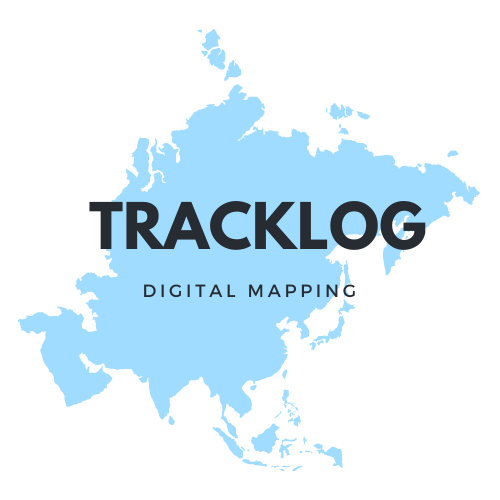In multidimensional single-cell experiments, innovation is found by precisely identifying cell subsets in complicated populations. We introduce X-shift, an algorithm that organizes populations based on marker-based classification and analyzes data sets utilizing fast k-nearest-neighbor estimation of cell event density (http://web., stanford., edu/samusik/vortex/). By automating cell-subset clustering, X-shift gives researchers access to biological discoveries that “previous knowledge” could have kept them from learning. This is a sample of paid content that you can access through your institution. Automated mapping is no so easy as it seem to be.
Introduction of automated data mapping
By breaking down the notion into its component elements, automated map production techniques may be grasped. According to Buckley and Watkins, “automation” is defined as the substitution of mechanical control for human intervention in the operation of a system, piece of machinery, or other manual activity. The word “map production” is used to describe the steps involved in creating a map, which may be described as “assembling and putting together the geographical data you will include in your map,” in addition to the creation of the other elements on the page.
Construction of a map entails not just placing it on a page, but also placing numerous linked maps over multiple pages and connecting them with other content like charts and tables. As an added bonus, making a map also requires making something that is complete. A “workflow” can be either a process or a set of procedures for accomplishing a goal. Thus, “automated map production workflows” are machine-driven processes that complete tasks associated with the creation of a map product, such as data collection, construction, or delivery.
Background of map production
The use of computers for mapping was revolutionary in the early 1970s, as Joseph K. Berry describes in his book “GIS Technology in Environmental Management.” This allowed for the automation of the formerly labor-intensive process of creating maps. The points, lines, and areas that make up a map are all represented as an ordered list of X,Y coordinates. With this information, pen plotters may quickly redraw the connections in a variety of colors, sizes, and projections. The image of the map itself is the key issue in this sort of automated mapping.
Many of the foundational principles and approaches employed in modern GIS technology originated from this period of groundbreaking work.
You may attribute data too!
One of the most obvious benefits of using a computer to create maps is the ability to alter one section of the map without having to redo the whole thing. Changing resource maps after a natural disaster like a forest fire used to take days, but can now be done in a matter of hours.
Changing the format of mapped data from analog inked lines on paper to digital values recorded on disk is “the less evident gain,” as stated by the article’s author. Another benefit is the radical shift in how mapped information is presented.
Geography-Related Database Administration
According to Berry, there was a change in the early 1980s in the way mapped data was stored and presented in computers. Spatial database management systems combined the know-how of conventional database management with that of digital mapping (SDBMS). Numbers are assigned to various geographic features by these systems. This might be anything from a timber harvest unit to a wildlife management parcel. As an example, a user may just point at a location on a map to instantly get relevant data about that region. It is possible to get this data in near-time. The user may also provide criteria, such as a desired plant and soil type, and the system will create a map showing all of the locations in the search region that meet the requirements (Berry).
Possibilities
At the present time, fully automated and computerized map production methods are not available. Despite this, there has been tremendous progress in automatic cartography, notably in label insertion, contour construction, generalization, and automated feature extraction. View the placement of computer-generated labels here, too.
Buckley and Watkins claim the following applications for automated methods: Different scales of similar idea maps abound.
Numerous maps exist, each covering the same general area but emphasizing a different set of details.
While some maps have the same scale and general idea, the specific data utilized to depict the topic changes throughout time.
Landscape elements and their qualities
A theme is a set of correlated landscape elements and their qualities, such as a network of roads, a cluster of adjacent properties, or a meandering river. Each component of a theme has commonalities in terms of its coordinate system, location within a larger geographical context, and overall qualities. Themes can be thought of as being analogous to layers.
An extent is the smallest rectangle whose coordinates are used to describe a data source (xmin, ymin, and xmax, respectively). You can find all of the coordinates for the data source inside this region.

All three of these feasible automation options may be traced back to a single page of mapping information. After that, everything from altering the layout to updating the text components and map features to activating and deactivating themes is handled automatically. Text, graphs, and charts that will appear in reports or publications with the map or maps are equally amenable to automation. Common material that can be automated includes page layouts and maps. Using automation, the maps and any combination of the aforementioned document kinds may be combined into a single output file to provide a multi-paged result. If the scenario is carried out as specified, pages with varying design and content can be incorporated into a single cartographic output. Nowadays technologies are developing really quickly, even the remote sensing is possible.
Making maps is not an easy deal but it is much easier nowadays then it was several years ago. Managing it demands machine learning and being acquainted with regulatory requirements. Data set should be organized appropriately too.

